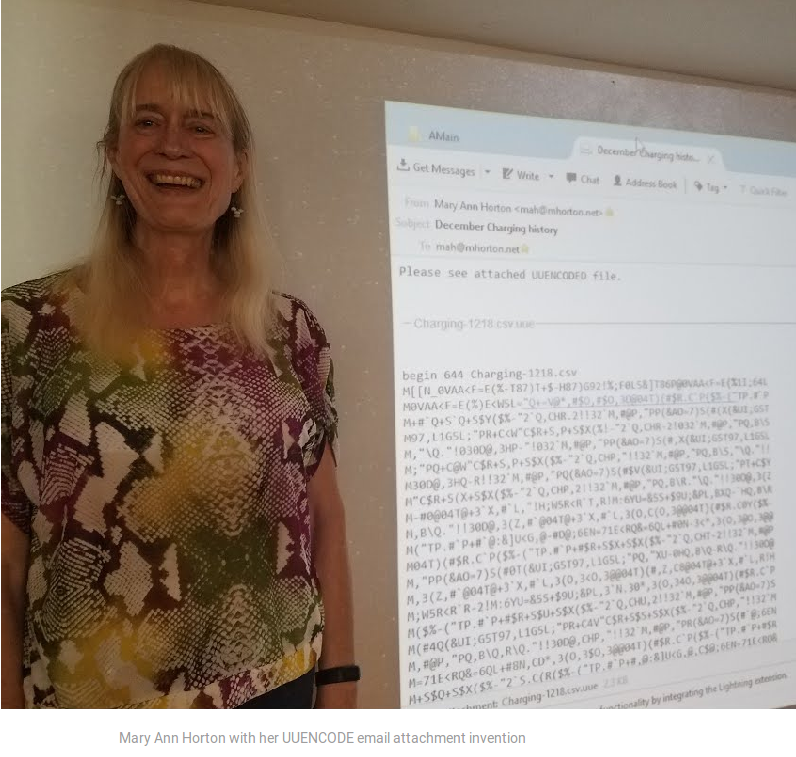40 years ago, June 1, 1980, the email attachment was launched.

Email had existed since the 1960s on disconnected computers. Ray Tomlinson made it far more useful in 1972, using the @ sign to connect researchers across the country over the ARPANET, the forerunner to todays Internet. All these emails messages were flat files, sending only text typed by the sender.
A few daring people inserted text files into their email messages, which could be saved by the recipient using a text editor to remove the rest of the email message. Binary files had to be written to magnetic tapes, or copied with FTP, the File Transfer Protocol that required the username and password of the recipient.
The UNIX system from Bell Labs didn’t have the ARPANET, so it used a low tech system over dial-up phone lines. Text and binary files could be copied to another UNIX with the UUCP (UNIX-to-UNIX CoPy) command, and text email messages piggybacked on UUCP to hop across the country over dial-up lines. Email messages could multi-hop from system to system to system if the sender specified a path, but files only copied over a direct link.
In 1980, Berkeley graduate student Mary Ann Horton needed a copy of another researcher’s program from Cornell. The program was made up of many text and binary files, so it could not be easily inserted into a plain text email message. It was inconvenient to send a magtape by postal mail, and a direct connection was not allowed; long distance telephone calls were expensive, and the universities said they could not afford them. Horton was a computer scientist, so a software solution was called for.
Horton solved the problem by writing a program called uuencode. It would encode a binary file into a slightly larger text file, which could be inserted directly into an email. The recipient would send the email message to complementary program, uudecode, which would extract the original binary file and save it to disk.
Thinking this pair of programs might be useful to others, she added them to the Berkeley Software Distribution. She went on with her research, not realizing she had invented the email attachment. Berkeley UNIX went on to become the most popular version of the UNIX system. Hundreds of universities, research companies, and military installations adopted it, and uuencoding of files became a de facto standard.
Five years later, the IBM PC had made desktop computing a realistic option for businesses. Concentric Systems developed a PC email system called cc:Mail. Their program used a graphical user interface, and allowed users to “attach” an office document file by clicking on a paper clip icon, mimicking the paper mail concept of attaching a document to a letter with a metal paper clip. When cc:Mail added “gateways” to exchange email over the fledgling Internet, they adopted the widely used uuencode format. Microsoft soon followed with their own MS Mail, also formatting them with uuencode.
In 1992, Bellcore developer Nat Borenstein took email attachments to the next level. He and collaborator Ned Freed developed a more powerful format. His Multipurpose Internet Mail Extensions, MIME, allowed email messages to be formatted with fonts, hyperlinks, sound, and pictures. His first MIME email message featured a photo of his barbershop quartet, along with audio of them performing “Let me Sing you Email”. MIME was a big hit, and quickly became a new standard for email attachments. Modern email messages continue to use the MIME format.
A 2017 news release proclaimed the 25th anniversary of the e-mail attachment, citing MIME. Old timers like Horton knew that attachments had been around since 1980.
Happy Birthday, Email Attachment!